Genre: Strategy/RPG Developer: Sega of Japan Publisher: Sega of America Players: 1 Released: 2011
It’s been a while since we last looked at the conversions of Genesis games for Apple’s iPhone. Since then, Sega transported many more of its classics to the mobile platform, regardless of genre. Among the titles ported to smart phones are platformers like Sonic The Hedgehog 1 and 2, run-‘n-guns like Gunstar Heroes, puzzle games like Columns, and RPGs like Phantasy Star II.
 Gamers still are pretty much divided over the issue whether the iPhone or the iPod touch qualify for a decent mobile gaming device. On the plus side, the touch screen and tilt mechanism can provide new and innovative means of game control and improve the immersion. Also, the platform offers a handful of titles that can hold up graphically with the competition (Nintendo DS or Sony PSP), while costing only about 1/3rd of the price). And older games and classics often only cost about one dollar, a dirt cheap prize for some true classics.
Gamers still are pretty much divided over the issue whether the iPhone or the iPod touch qualify for a decent mobile gaming device. On the plus side, the touch screen and tilt mechanism can provide new and innovative means of game control and improve the immersion. Also, the platform offers a handful of titles that can hold up graphically with the competition (Nintendo DS or Sony PSP), while costing only about 1/3rd of the price). And older games and classics often only cost about one dollar, a dirt cheap prize for some true classics.
On the other hand, most of the ported titles don’t make use of the new control possibilities, opting for simulated buttons on the touchscreen area instead. This lack of a real button, the lack of a “physical” response so to speak, creates a somewhat less intuitive feel for more action-laden games, especially platform and shooting games. An emulated D-pad doesn’t control as precisely as a real one does. Finally, many games don’t seem to run as smoothly as they could on the iPhone, especially when it comes to the old classics. Sega in particular went the easy route with its Genesis titles, opting for emulating the originals instead of properly porting and adapting them for the new platform.
These counterpoints afflict fast and action-oriented games the most, ports of Sonic The Hedgehog, Golden Axe or Space Harrier suffer the most from a lack of firm controls and the occasional slowdown resulting from shoddy emulation. Slower paced RPGs or strategy games on the other hand don’t share that problem, as their strengths lie in story, presentation and tactics rather than speed and precision. For the less hardcore among gamers, the emulation even provides an additional plus: the ability to effectively save wherever you want, whenever you want. Keeping that in mind, a game like Shining Force seems perfectly suited for the mobile gaming treatment. So, honoring the twentieth anniversary of the Shining series, I decided to check out how well one of the most lauded and critically acclaimed Genesis titles holds up on a modern smart phone.
As with its other Genesis ports to the iPhone, Sega decided to go with the quick and dirty way of simply emulating the game, placing slightly transparent buttons and a virtual D-pad on the screen. You can play the game by either having the simulated controls overlap the game screen, or having screen shown in a smaller window with the button placed in a frame. Since a smaller screen makes details and text harder to recognize, the latter option isn’t really advisable if you value your eyes. Since the Genesis version of Shining Force only utilized two buttons, A for confirming actions and B for canceling them, emulating a third button was unnecessary, so the C button has been left out. Compared to other iPhone ports, this greatly improves the visibility of the area.
The gameplay itself has been left untouched. For the most part this is a great thing, since this area has always been one of the great strengths of the game and its direct sequels. Over the course of the story you recruit knights, healers, archers and mages to your squad, each with his or her own strengths and weaknesses. Out of them you form a party of up to twelve characters you can then send into various battles. The more they fight, the more experience they get until they advance in levels and get stronger, more durable etc. In various shops around the country you can buy and sell equipment, and at your headquarters you can always swap out party members with other recruited characters to find your optimal strike force. Including the secret characters, there are up to about thirty to choose from, and there is quite an amount of variety to them.
As I mentioned, the controls have been left and entirely untouched, and herein lies the biggest downside of this kind of port. As in the 16-bit original, menu and dialogue options are chosen by confirming a corresponding icon. Playing the game on the screen of an iPhone or iPad touch can therefore be a tad more problematic since the icons are almost too small to recognize. On an iPad this isn’t that much of a problem, obviously.
However, here lies the biggest gripe I have with this version. With a strategy/RPG game like Shining Force, there should be no need for an emulated game pad! You already have to use the touch screen in order to play the game, so why not implement this method directly into the game? That would make playing even more comfortable than originally intended. Move your party members by sliding a finger across the screen, and select your battle options by directly tipping on the corresponding icon.
The programmers responsible for the port completely ignored the biggest strength of the iPhone as a gaming device. It appears that no thought whatsoever went into this port besides removing one unnecessary control button. This fact becomes even more apparent once you look at the save method. Since it runs through emulation, Shining Force allows you to break off and continue whenever you want without using a specific save command. Arguably, this can be very comfortable and turns the game into a more casual experience. In the Genesis version, you could only save outside of a battle by visiting a church and selecting the command. On the iPhone, you can quit the game whenever you want, even while in battle, and continue right where you left off. It’s advisable to use the save method in churches too, though. Should you have managed to maneuver yourself into an unwinnable position, you will curse your automatic save state.
At first that doesn’t sound too bad, but it leads to some strange experiences. If you want to load a game saved at a church, you will have to enter the main menu, then select “new game,” confirm that you want to abandon and delete your last saved state, then go to the in-game menu and load your old save state from there. Sounds confusing? Then how about this. On the Genesis, you could go into a church, save and then select the option to leave the game. You’d then be taken to a closing screen, which would be the point where a gamer turned off his console. In the iPhone version, you get pretty much stuck there. If you end the game here and continue at another point, you will always come up on this screen, unable to do anything. Again, the only solution is to start a “new” game, confirm that you want to abandon your save state, and then load your last in-game save from within the emulation.
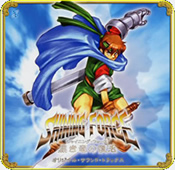 Sure, by doing simple emulation of the game instead of an actual port, the gameplay and story of Shining Force were left intact. The visuals, while a bit dated, still serve their purpose very well. It remains a great gaming experience, with a story that, while basic in the beginning, manages to be enthralling and exciting over the entire course. The problem is that it’s easy to see how this game could have been so much more. The graphics could have done with some updates, and the control scheme practically begs for true touchscreen implementation.
Sure, by doing simple emulation of the game instead of an actual port, the gameplay and story of Shining Force were left intact. The visuals, while a bit dated, still serve their purpose very well. It remains a great gaming experience, with a story that, while basic in the beginning, manages to be enthralling and exciting over the entire course. The problem is that it’s easy to see how this game could have been so much more. The graphics could have done with some updates, and the control scheme practically begs for true touchscreen implementation.
Despite these flaws, Shining Force is still a good game today as it was back in the 16-bit era. And since Sega slashed the price for the game down to seventy-nine cents in the App store, you’ll be hard pressed to find another game with the same depth and longtime value this one has. Even though I’m a bit disappointed about the lack of effort, I’d still highly recommend getting the game. It’s translated better than the more action-oriented titles still offers rich and detailed gameplay, and it remains a “shining” example of the old 16-bit era games.

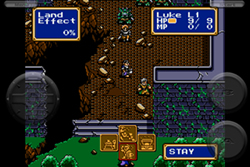
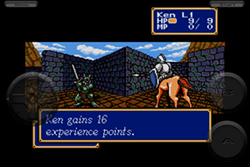
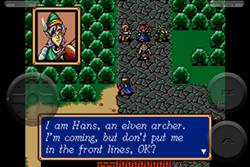
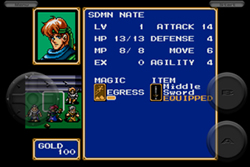

Recent Comments